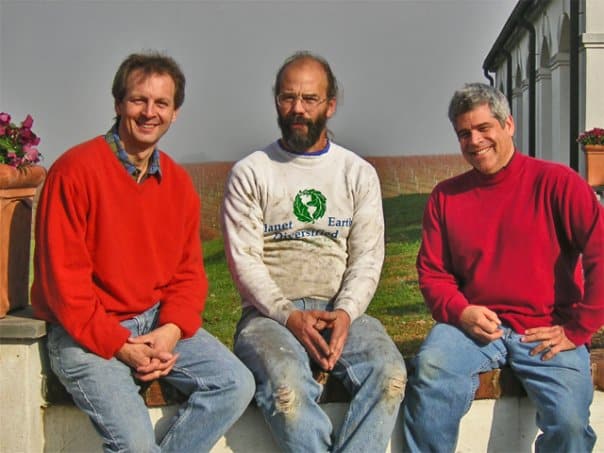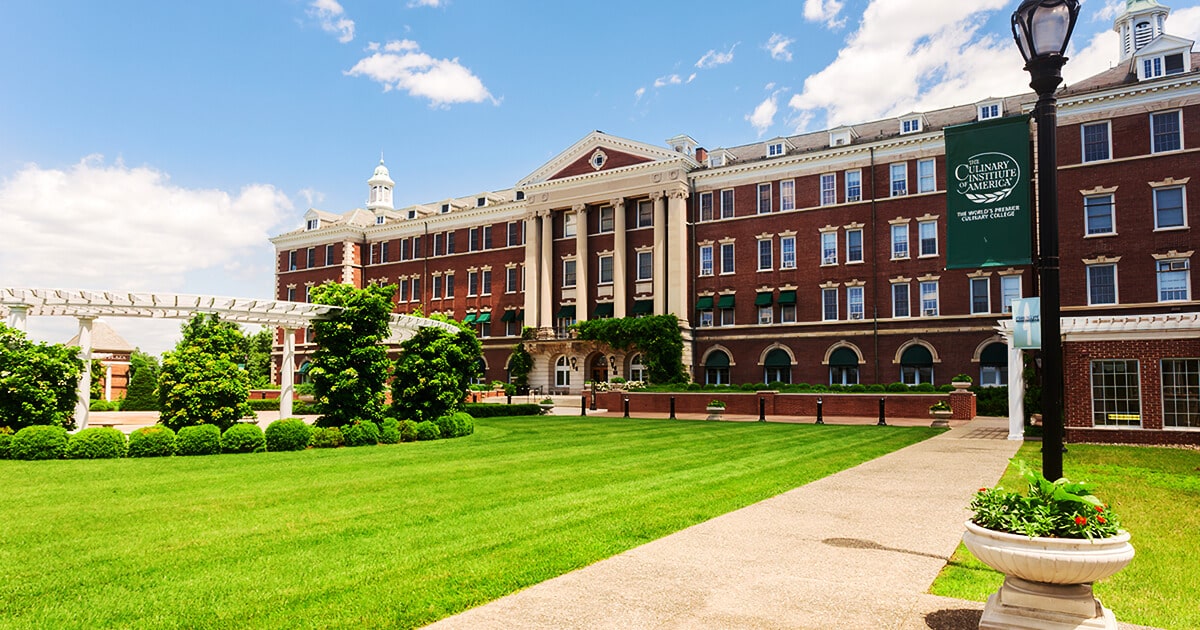
Craig Hartman invented and coined the term “Microgreens” in 1992 when his friend Michael Clark grew and delivered what he believed were baby greens.
Pam Parseghian, a food writer from Nations Restaurant News, published the story about microgreens, which got shared with all the restaurant people in America in 1992.
This is the inside story and interview with Craig Hartman on who invented microgreens and how the name got printed.
Prologue
One of the questions I’ve always wondered about is who invented microgreens. There’s no conclusive evidence floating on the internet, so I set out on an eight-month journalistic investigation to track down the person behind microgreens.
Searching the internet returned zero results until I decided to use the Wayback Machine. The Wayback Machine is a digital archive of the World Wide Web and was the tool I used to find an article that mentions a chef that invented microgreens. The website is no longer online, but it did mention who invented microgreens, Craig Hartman.
This was my lucky break! I had a name and an old photograph of three gentlemen perching on a fence with a vineyard in the background.

I searched Google, Facebook, and LinkedIn. The problem I was facing was that the gentlemen were much younger as the photograph is probably over two decades old!
It took me months of searching between all the social media platforms comparing profile images of all the Craig Hartmans to the old photograph I had. Until I stumbled upon this profile photo.

This was my guy! I knew this was Craig as the eyes and smile were the same as the one in the photo. I decided to send him a private message over Facebook and hoped he would see it and reply. This was that message.
I patiently waited, and within two days, I received a reply from Craig. This is what he said.
Introduction
Hi Craig, I hope you’re doing well, and thank you for taking the time to have a chat with me.
No problems, where are you from Milos?
I’m from Titahi Bay, Wellington, New Zealand. My parents are from Serbia hence my exotic name.
Hahaha, I got you. New Zealand is a beautiful place.

Me overlooking Titahi Bay beach from my backyard.
Yes, it’s even better when the weather holds up! How’s the weather in Virginia, and are you all keeping safe during this bizarre time?
You know what, we’ve been safe. So we’re pretty thankful, but you know, the hard part is the restaurant business right now.
We’re doing everything takeout and curbside. And so, you know, it’s a challenge. And you know, costs get raised because you have so much packaging and deliveries, but you know, we’re making it work, I’m thankful.
Glad to hear your area is doing well. But as you say, the restaurant business has been hit hard by this, and all the microgreen farmers are finding new alternative ways to sell their products.
A lot of microgreen farmers are now providing delivery services to their neighbors and neighborhood. So everybody’s just figuring this out as we go. But it’s tough because delivering perishable produce is a whole different ball game.
Yeah, well, you remember that company called Chef’s Garden in the US? I don’t know if they’re still around?
Yeah, I know the company, and they’re still around.
True, but when Chef’s Garden learned about hydroponics and growing microgreens it was all shipping, and they figured out how to package everything for shipping. They’re in Ohio, but restaurants all over America were getting everything shipped.
Shipping is one of the biggest challenges for small scale farmers. There’s a lot that goes into the logistics of keeping the produce fresh. So a lot of people do deliveries within their communities as they cannot ship long distances.
Right? True, but Chefs Garden were the ones that figured it all out. And they did exceptionally well.
True. I’ve noticed on your LinkedIn profile that you attended the Culinary Institute of America in Hyde Park in New York. Correct?
I did, yes.

The Culinary Institue of America in Hyde Park, New York.
What qualifications did you earn through your studies, and when did you graduate?
I graduated from the Culinary Institute in 1978.
Wow, so you’re what I would call an old-timer?
Hahaha, yes, I guess you could say that. Back then, we had a degree called an Associate’s Degree in Applied Sciences. And what that meant was, they didn’t actually have a name for this associate’s degree.
So, an Associate’s Degree in America is when you are like halfway to a Bachelor’s Degree. That’s what an Associate’s Degree is, and the Applied Sciences are the culinary arts, and so I got that degree in 1978.
What did you think of the experience?
I found the experience great. I mean, to be in a kitchen, like eight hours a day, five days a week, you know, with these brilliant chefs. And, you know, if you love what you’re doing and you’re in the kitchen, you’re going to be happy anyway.
I just found it to be a real happy place and the fact that I was able to do what I love so much made all the difference for me as I was able to focus on what I was learning.
I think people can do a great job in our business without going to school by working in great places. But what that school did for me was give me so much access to information.
And then, you know, the applied information where you’re watching someone do something, and then you turn around and do it right after kind of lives with you. Do you know what I mean? It stays in your mind forever.
Yeah, there’s no better way to learn than to get your hands dirty and just do it!
I’ve got a photograph I want to share with you. This is the photo that was part of the article that mentioned your name and how you love to tell your story of how you invented microgreens.
Yeah, that’s Mike’s photo. I remember this. This was taken at Palladio Restaurant Barboursville Vineyards. Luka on the left owns the vineyard, Mike with the same white sweatshirt he wears to this day is in the middle, and I’m on the far right in the red sweater.

Mike’s a burned-out electrical engineer. Ronald Reagan offered him a job to work on the Strategic Defense Initiative (SDI) system, nicknamed the pie-in-the-sky Star Wars missile defense system.
No way, really!?
Yeah, he declined. And, instead built a farm and grew hydroponic tomatoes for Whole Foods. Whole Foods used to be called Fresh Fields. He was one of the first people to do hydroponics in America.

Mike’s beautiful organic tomatoes he still grows today!
Who Invented Microgreens?
So wait, who invented microgreens, and how?
Well, Mike was the one who started growing microgreens for me when we kind of messed up, that is how the story goes. During the time he was growing hydroponic tomatoes for Whole Foods, he had these farms up and down the coast.
Eventually, more and more competition drove the prices down of his tomatoes, and he lost a lot of business. He needed to do something else, so he came to me.
So he asked me, “Hey, you know what, what can I do?” And I had a restaurant at that point which had prefixed dining, in a beautiful old in, and so we’d feed maybe 70 people a night on a prefixed menu.
So, you know, I said, well, I could use, you know, five or six pounds of baby greens every day, and they could change throughout the year. They could be all different kinds, you know, but everybody gets a course with some sort of salad.
And he didn’t know what baby greens were because he’d never grown baby greens. So he brought me these bags of tiny greens. I mean, he brought me five pounds, you know how much greens that is? Right?

Comparison between microgreen & baby Red Romaine Lettuce.
Yeah, that is a lot of microgreens!
Yeah, and he told me, he goes, “I hope you like these because this took an entire greenhouse that I had to get this,” I looked at them, and I’m like, I was like, dude, what are these?!
So Mike says, “they’re baby greens!”. So then I showed him, you know, how big I wanted them because these were not baby greens, I’ve never seen anything like this before, these were tiny. And he’s like, “well, what are you going to do with those?” I said, I’ll use them.
Do you recall which microgreens Mike grew for you, and how did you serve them?
I do. I told Mike to grow me baby red romaine, baby tatsoi, baby oak leaf lettuces, and arugula. But as he didn’t know how big I wanted them, he accidentally grew them extremely small, thinking that’s what baby greens were.
So how did the term microgreens get coined?
Well, it just so happened that a food writer was there that night. Pam Parseghian was her name – she was from Nation’s Restaurant News.
And we served her those microgreens in a salad. She asked me, “what in the world, what kind of green are these?” So we just made the name up. She took pictures and published it in the Nation’s Restaurant News, which back in the day was like a colored newspaper, and it was free to all the restaurant people in America.
When NRN published the story, the word got out about microgreens, and it’s around the same time that Michael went and did a big seminar with a company that made hydroponic equipment.
There were maybe 300-400 people at this event, and the people that started Chef’s Garden were also at that seminar, so Mike showed these microgreens to over 300 farmers. That’s how it all got started.
What year was this? Do you remember?
Sometime during 1992, I can’t remember the exact month, but I know it was during 1992. I have seen writers say things like, Oh, these have been around since the mid-80s.
I can tell you I never saw a microgreen until that time, and I didn’t see anybody using them on menus until the mid to late 90s.
Chef Craigs Favorite Microgreens
Tell me if you had to pick your favorite microgreens in terms of flavor and appearance. What would they be?
I love microgreen watercress! I like the flavor of it. It’s really strong, and it’s kind of upfront, and it pairs very well with a nice steak. Beets are another microgreen I love. The green leaves and the red stems are so pretty.
Discover the diverse world of microgreens with our comprehensive guides covering all types available for you to grow today! View all the different microgreen types we have info on here.
I also used to do microgreen collards a lot too. They have this beautiful heart shape. There was a time when we were doing a take on Southern cuisine, and collard greens are one of the popular vegetables used in the south. So we were able to, you know, do a play on a lot of dishes using microgreen collards.
Chef Craigs Least Favorite Microgreens
That’s interesting! What would be your worst microgreen in terms of flavor and appearance, and why?
That’s a good question! I think it has to be corn shoots. I just can’t get past the flavor. Maybe it’s because when I was a child, I lived amongst the cornfields, and, you know, we used to chew on the corn. You know, the green corn husk and stuff.

I think they look pretty. I just don’t think corn shoots add anything to a dish. Other than the look.
But some people like them. And, you know how we do in the food business. Sometimes we think we know more than other people. But the older you get, the more you realize that sometimes things you think you know, you don’t really know.
Because these young chefs keep proving me wrong anyway, so I’m not gonna doubt them anymore because they do come up with some amazing stuff.
Chef Craigs Advice For Microgreen Famers
Very true! Tell me, if you could give one piece of advice to microgreen farmers, what would it be?
Well, I think the best thing they can do is to create relationships and go out and attend a market, create relationships with the public and with restaurants.
They should stop by restaurants and see a chef and give them some samples and ideas on how to use microgreens. It’s all about the relationships.
There was an article recently in our hometown here, at Charlottesville, where one of the restaurants during this quarantine lockdown, felt so bad for his farmer that they started selling his produce for him through the restaurant.
They had people pick up their fresh produce at the restaurant, so those relationships go a long way. You know, people really work to take care of each other because of those relationships.
That is true, relationships, in my opinion, are the most important aspect of any business.
Exactly!
Well, I just want to say a big thank you for your time, Craig. I appreciate you taking time out of your day to share this extraordinary story with me! It has been really refreshing to finally hear the true origin story of who invented microgreens.
It was a pleasure talking to you Milos, and I’m happy you enjoyed listening to this old-timers story.
Before you go, where can we find you and Mike, ie do you guys have a website?
Yes, we do. You can find me at BBQ Exchange or on Facebook. You can find Mike at Planet Earth Diversified and on Facebook. Luka also has a website, and you can find him at Barboursville Vineyards.
Thanks, for sharing that, appreciate it. You keep safe, and thanks again for the chat. Ciao!
You take care and be safe. I look forward to seeing your website.
What do you think of this eye-opening story of who invented microgreens? I would love to hear your thoughts in the comments section below, and remember, Keep Your Hands In The Dirt!






Comments (4)
Thanks for your blog, nice to read. Do not stop.
Thanks Mark, appreciate it, glad you enjoyed the post!
Wonderful. I can relate. There’s an ancient proverb of Abagusii people of Kenya that goes:
Mokonyi iroba tari gokwa Igo. (Loosely translated would be: S/He that dirties their hands in the soil would never be destitute.)
Absolutely, that’s a beautiful proverb from the Abagusii people of Kenya. It’s a timeless reminder of the value of hard work and the connection between effort and prosperity. Just like getting your hands dirty in the soil ensures a fruitful harvest, putting in effort and dedicating oneself to a task often leads to success and abundance in various aspects of life. This wisdom resonates across cultures and serves as an inspiration for us all.